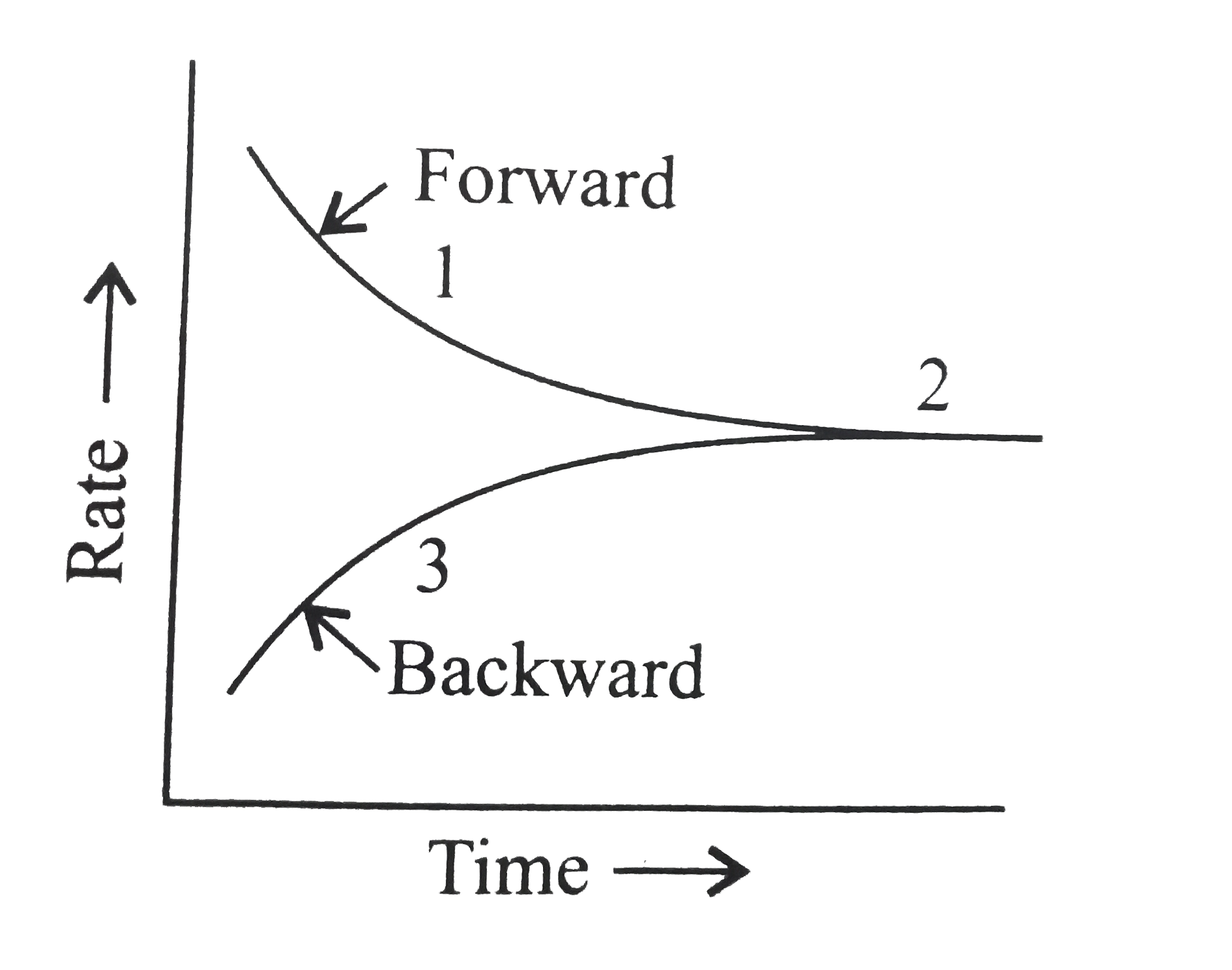The order of a reaction can be––––––– calculated from law of mass action.
To solve the question regarding the order of a reaction and its relation to the law of mass action, we can break it down into the following steps:
Step 1: Understand the Law of Mass Action
The law of mass action states that the rate of a chemical reaction is proportional to the product of the concentrations of the reactants, each raised to a power corresponding to their stoichiometric coefficients in the balanced equation. For a reversible reaction A⇌B, the rates can be expressed as:
- Rate of the forward reaction: Rateforward=kf(A)n
- Rate of the backward reaction: Ratebackward=kb(B)m
Step 2: Define Reaction Order
The order of a reaction is defined as the sum of the powers of the concentration terms in the rate law expression. It is determined experimentally and does not necessarily correspond to the stoichiometric coefficients of the balanced equation.
Step 3: Distinguish Between Rate Law and Law of Mass Action
While the law of mass action provides a theoretical framework for understanding reaction rates, the actual order of a reaction is determined from experimental data and is represented in the rate law. For example, if the rate law is given as:
Rate=k(A)2(B)1
The order of the reaction is 2+1=3.
Step 4: Conclusion
The statement in the question is false because the order of a reaction cannot be directly calculated from the law of mass action. It must be determined from the rate law, which is derived from experimental observations.
Final Answer
The order of a reaction can be calculated from the rate law equation, not from the law of mass action.
---
The law of mass action states that the rate of a chemical reaction is proportional to the product of the concentrations of the reactants, each raised to a power corresponding to their stoichiometric coefficients in the balanced equation. For a reversible reaction A⇌B, the rates can be expressed as:
- Rate of the forward reaction: Rateforward=kf(A)n
- Rate of the backward reaction: Ratebackward=kb(B)m
The order of a reaction is defined as the sum of the powers of the concentration terms in the rate law expression. It is determined experimentally and does not necessarily correspond to the stoichiometric coefficients of the balanced equation.
While the law of mass action provides a theoretical framework for understanding reaction rates, the actual order of a reaction is determined from experimental data and is represented in the rate law. For example, if the rate law is given as:
Rate=k(A)2(B)1
The order of the reaction is 2+1=3.
The statement in the question is false because the order of a reaction cannot be directly calculated from the law of mass action. It must be determined from the rate law, which is derived from experimental observations.
The order of a reaction can be calculated from the rate law equation, not from the law of mass action.
Topper's Solved these Questions
- BOOK - ICSECHAPTER - CHEMICAL KINETICSEXERCISE - EXERCISE (PART- I (OBJECTIVE QUESRTIONS) D. MATCH THE FOLLOWING )3videos
CHEMICAL KINETICS
- BOOK - ICSECHAPTER - CHEMICAL KINETICSEXERCISE - EXERCISE (PART- II (DESCRIPTIVE QUESRTIONS) A. VERY SHORT ANSWER QUESTIONS (WITH ANSWERS ))132videos
CHEMICAL KINETICS
- BOOK - ICSECHAPTER - CHEMICAL KINETICSEXERCISE - EXERCISE (PART- I (OBJECTIVE QUESRTIONS)B.COMPLE THE FOLLOWING STATEMENTS BY SELECTING THE CORRECT ALTERNATIVE FROM THE CHOICES GIVEN )105videos
CHEMICAL KINETICS
- BOOK - ICSECHAPTER - BIOMOLECULESEXERCISE - ISC EXAMINATION QUSTIONS (PART-I)(DESCRIPTIVE QUESTIONS)21videos
BIOMOLECULES
- BOOK - ICSECHAPTER - CHEMISTRY IN EVERYDAY LIFEEXERCISE - EXERCISE (PART - II (DESCRIPTIVE QUESTIONS) (LONG ANSWER QUESTIONS))19videos
CHEMISTRY IN EVERYDAY LIFE
Similar Questions
Order of a reaction cannot be fractional––––––––––––––––––––––––
View SolutionOrder of a reaction cannot be fractional––––––––––––––––––––––––
View SolutionOrder of a reaction cannot be fractional––––––––––––––––––––––––
View SolutionThe order of a reaction is determined from:
View SolutionExplain the terms:
Law of mass actionView SolutionThe order of reaction can never be zero.
View SolutionMass action rato or reaction quotient Q for a reaction can be calculate using the law of masss action
A(g)+B(g)⇔C(g)+D(g)
Q=[C][D][A][B]
The value of Q decides whether the reaction is at equilibrium or not.
At equilibrium, Q=K
For an equilibrium process, Q≠K
when Q>K, reaction will favour backward direction and when Q<K, it will favour direction.
Answer the following questions:
In the reaction:
NH4Cl(g)⇔NH3(g)+HCl(g)
a graph is plotted to show that the variation or the rate of forward and backward reaction against time.
Which of following is correct?
 View Solution
View SolutionMass action rato or reaction quotient Q for a reaction can be calculate using the law of masss action
A(g)+B(g)⇔C(g)+D(g)
Q=[C][D][A][B]
The value of Q decides whether the reaction is at equilibrium or not.
At equilibrium, Q=K
For an equilibrium process, Q≠K
when Q>K, reaction will favour backward direction and when Q<K, it will favour direction.
Answer the following questions:
For the reaction:
2A+B⇔3C at 298K,Kc=40
A 4L vessel contains 2,1, and 4 mol of A, B and c, respectively. The reaction at the same temperatureView SolutionThe rate of a reaction can be determined ––––––––––––––––––––––by dividing the total change in concentration by total time taken.
View SolutionThe rate of a reaction can be determined ––––––––––––––––––––––by dividing the total change in concentration by total time taken.
View Solution
